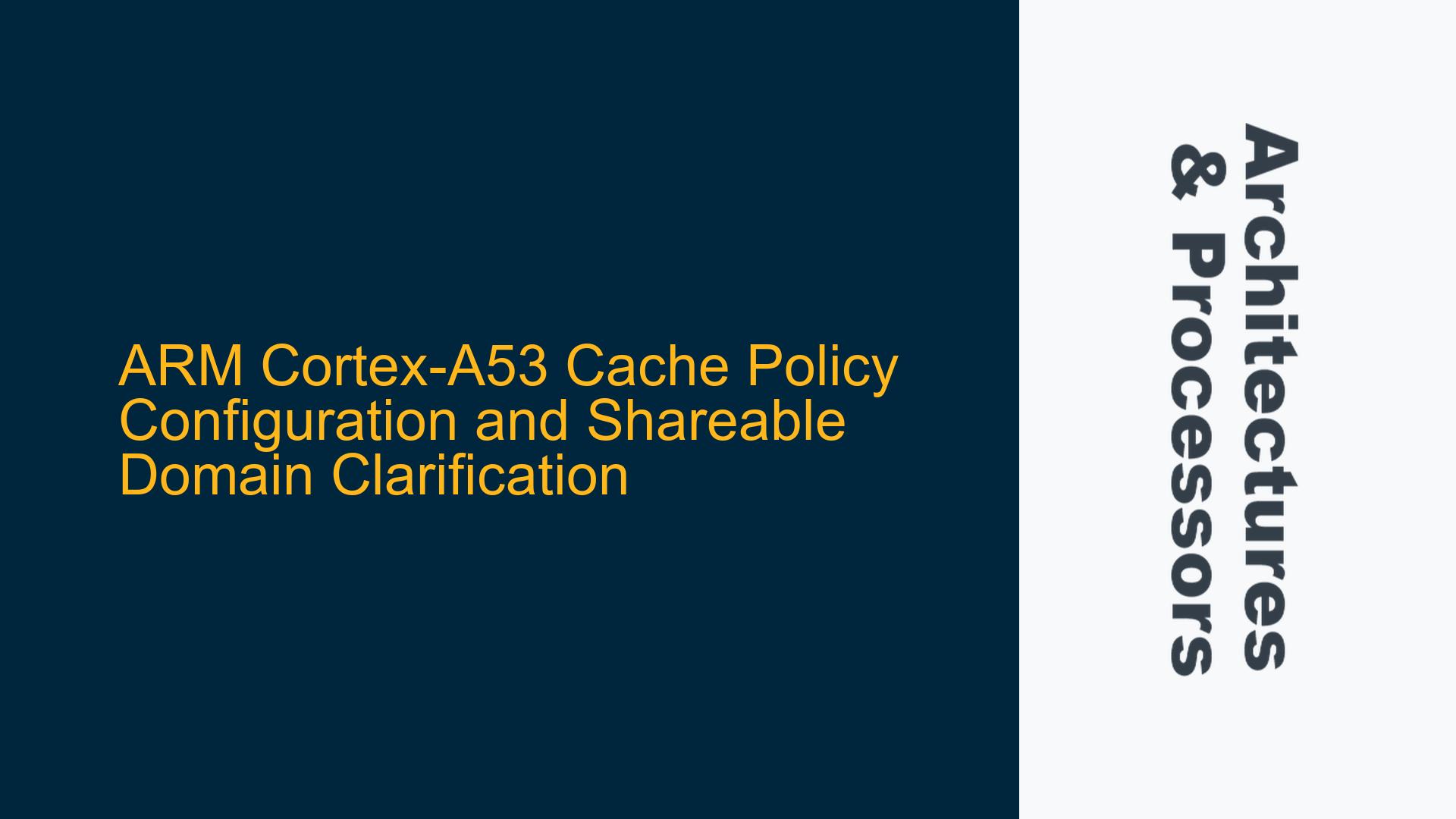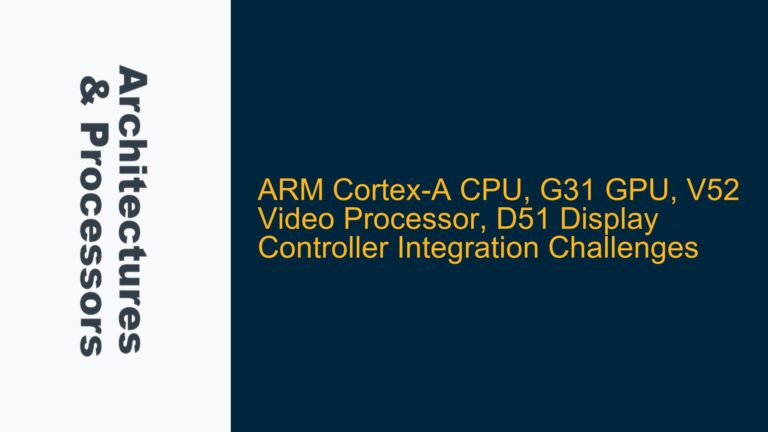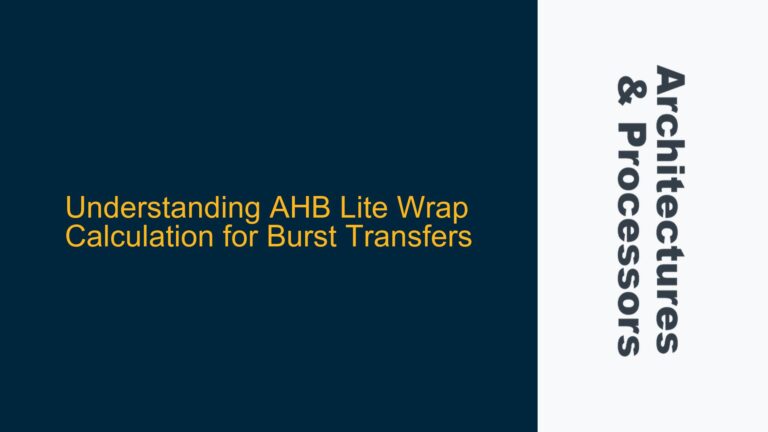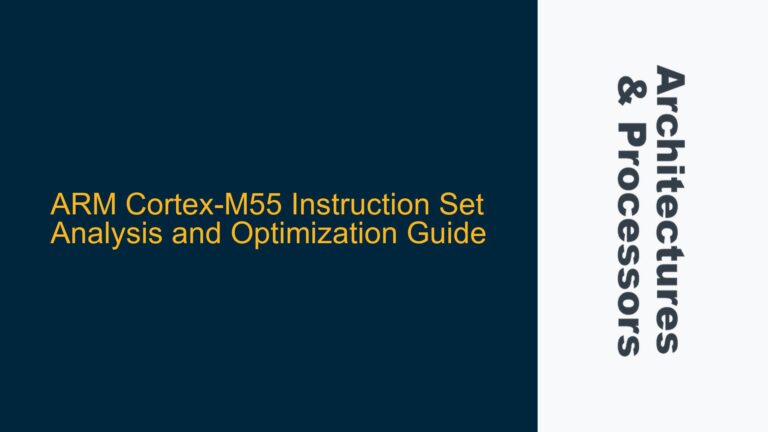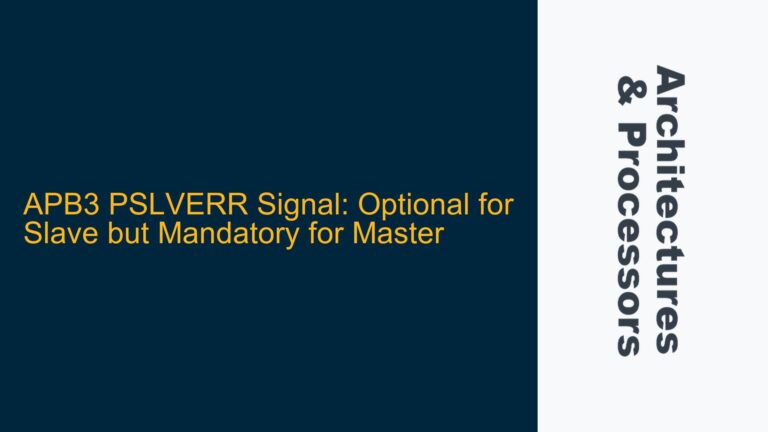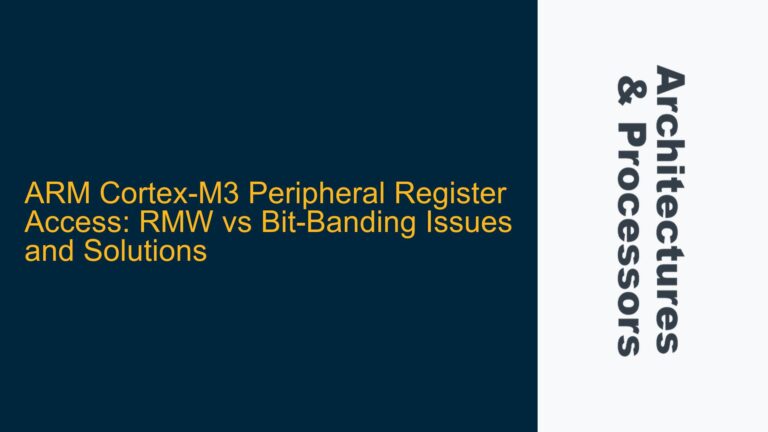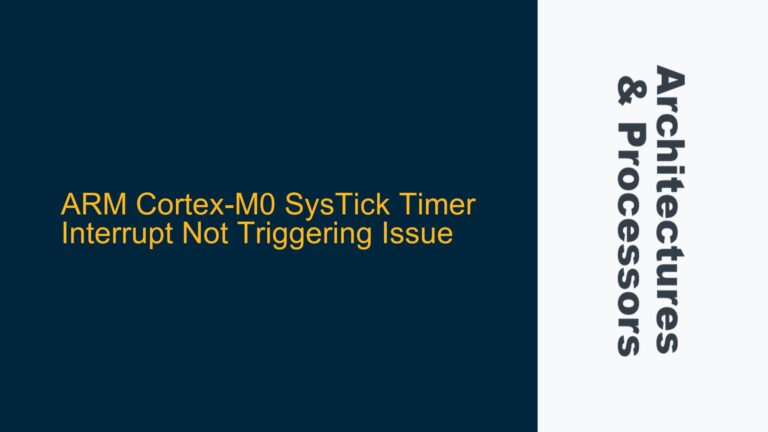ARM Cortex-A53 Inner Shareable Domain Hierarchy and Cache Policy Configuration
The ARM Cortex-A53 processor, part of the ARMv8-A architecture, introduces a complex memory hierarchy with multiple levels of caches and shareable domains. Understanding the inner shareable domain and its relationship with cache policies is critical for optimizing performance and ensuring data consistency in multi-core systems. The inner shareable domain typically includes the L1 and L2 caches, but the exact hierarchy and configuration options are not always straightforward. This post delves into the specifics of the inner shareable domain, how it relates to cache policies, and how to configure L1 and L2 caches with different policies such as write-through and write-back.
The inner shareable domain is a concept in ARM architectures that defines a group of processors or agents that share memory and cache coherency. In the Cortex-A53, the L1 and L2 caches are generally part of the inner shareable domain, meaning they participate in cache coherency protocols to maintain consistency across cores. However, the ARM architecture does not provide a direct register to query the shareable domain hierarchy. Instead, the shareable domain is implicitly defined by the architecture and the implementation of the processor.
Cache policies, such as write-through and write-back, are configured using the Memory Attribute Indirection Registers (MAIR_ELx). These registers allow software to define memory attributes for different regions of memory, including cacheability and shareability. However, the MAIR_ELx registers do not explicitly differentiate between L1 and L2 cache policies. This raises questions about whether it is possible to configure L1 and L2 caches with different policies, such as setting the L1 data cache to write-through and the L2 cache to write-back.
Memory Attribute Indirection Registers (MAIR_ELx) and Cache Policy Ambiguity
The MAIR_ELx registers are used to define memory attributes for up to eight memory regions. Each region is associated with an attribute field that specifies properties such as cacheability, shareability, and memory type. The cache policy for a memory region is determined by the attributes specified in the MAIR_ELx registers. For example, a write-through policy can be configured by setting the appropriate attribute field to indicate non-cacheable or write-through behavior, while a write-back policy can be configured by setting the attribute field to indicate write-back behavior.
However, the MAIR_ELx registers do not provide a mechanism to specify different cache policies for L1 and L2 caches. When a memory region is configured with a specific cache policy, that policy applies to all levels of the cache hierarchy within the inner shareable domain. This means that if a memory region is configured as write-back in the MAIR_ELx registers, both the L1 and L2 caches will use the write-back policy for that region. Similarly, if a memory region is configured as write-through, both the L1 and L2 caches will use the write-through policy.
This behavior is consistent with the ARM architecture’s design philosophy, which emphasizes simplicity and uniformity in cache management. However, it also means that software cannot independently configure L1 and L2 cache policies for the same memory region. This limitation can be problematic in scenarios where different cache policies are desired for L1 and L2 caches, such as when optimizing for performance or power consumption.
Implementing Write-Through for L1 and Write-Back for L2 Caches
While the ARM architecture does not provide a direct mechanism to configure L1 and L2 caches with different policies, there are workarounds that can achieve similar results. One approach is to use different memory regions for L1 and L2 caches, with each region configured with the desired cache policy. For example, a memory region accessed frequently by the L1 cache can be configured as write-through, while a memory region accessed by the L2 cache can be configured as write-back.
To implement this approach, software must carefully manage memory allocation and access patterns to ensure that data is placed in the appropriate memory region. This can be achieved using memory attributes and page tables to map different memory regions to different cache policies. For example, the Translation Table Base Register (TTBR) and page table entries can be used to define memory regions with specific cache attributes.
Another approach is to use cache maintenance operations to enforce different cache policies at runtime. For example, software can use the Data Cache Clean (DC CVAC) and Data Cache Clean and Invalidate (DC CIVAC) instructions to manually manage cache lines in the L1 and L2 caches. By combining these instructions with appropriate memory barriers, software can enforce a write-through policy for the L1 cache while allowing the L2 cache to use a write-back policy.
However, these workarounds require careful implementation and testing to ensure correctness and performance. Improper use of cache maintenance operations can lead to data corruption, performance degradation, or unexpected behavior. Therefore, it is essential to thoroughly understand the ARM architecture and the specific implementation of the Cortex-A53 processor before attempting to implement custom cache policies.
Conclusion
The ARM Cortex-A53 processor’s inner shareable domain includes the L1 and L2 caches, which participate in cache coherency protocols to maintain consistency across cores. While the architecture does not provide a direct register to query the shareable domain hierarchy, the inner shareable domain is implicitly defined by the architecture and the processor implementation. Cache policies, such as write-through and write-back, are configured using the MAIR_ELx registers, but these registers do not provide a mechanism to independently configure L1 and L2 cache policies for the same memory region.
Despite this limitation, software can achieve similar results by using different memory regions or cache maintenance operations to enforce different cache policies for L1 and L2 caches. However, these approaches require careful implementation and testing to ensure correctness and performance. By understanding the ARM architecture and the specific implementation of the Cortex-A53 processor, developers can optimize cache policies for their specific use cases while maintaining data consistency and performance.
